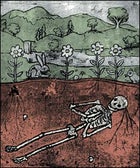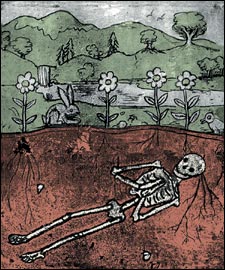JOHN WILKERSON IS A REDNECK RIVIERA homeboy, a dirt farmer by trade who over the years has specialized in alternative wildlife-attracting crops like chufa (a favorite of wild turkeys) and velvet bean (filet mignon for deer). Now he wants to plant people. In October, the 54-year-old Wilkerson will begin turning his farm in Glendale, Florida, 40 miles north of the Gulf Coast, back into forest primeval. He’ll do it by incorporating the 350 acres as a nature preserve, then opening an eco-burial ground on the portion that’s been longest under the plow—no embalming fluid, steel-lined coffins, or concrete vaults allowed. As Wilkerson knows, traditional cemeteries are incredible resource consumers—some 800,000 gallons of formaldehyde-based embalming fluid and 40 million board feet of timber get deep-sixed in America’s million-plus acres of graveyards each year. Unlike conventional urban cemeteries, biological deserts that can pack upward of 1,200 bodies into an acre, the deceased at Glendale Nature Preserve will be tucked discreetly here and there among the returning trees, while the wildest areas on the farm will remain grave-free.

With its low overhead (no grass to mow and no pesticides to spray), Glendale can charge less for plots and funerals—about $2,000 total—and still generate a tidy sum for long-term stewardship. But Wilkerson had more than money on his mind when he dreamed up the idea. “My daddy told me before he died, ‘Don’t ever let our farm get turned into a trailer park,'” he says. “And ‘ever’ is a long time.”


